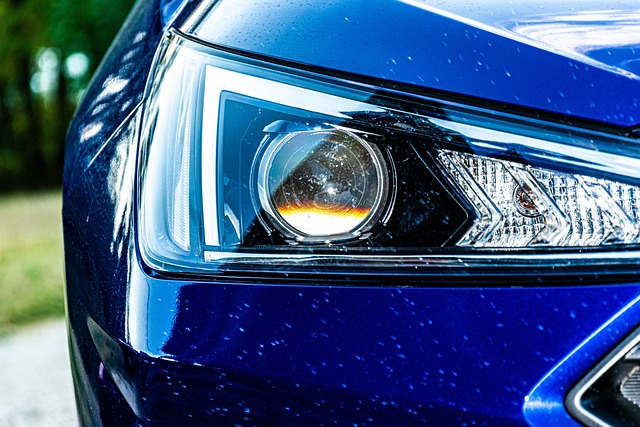Learn About Crossover SUV Models & Pricing - A Comprehensive Guide
Crossover SUVs have become increasingly popular among American drivers, combining the elevated driving position and cargo space of traditional SUVs with improved fuel efficiency and car-like handling. These versatile vehicles offer a practical solution for families and individuals seeking a balance between utility and comfort. Understanding the various models, pricing structures, and key features available in today's market can help potential buyers make informed decisions when selecting their next vehicle.

What Are Crossover SUV Models Of 2025?
The 2025 model year brings numerous crossover options across different size categories and price points. Compact crossovers like the Honda CR-V, Toyota RAV4, and Mazda CX-5 continue to dominate the market with updated styling and enhanced technology features. Mid-size options include the Honda Pilot, Toyota Highlander, and Subaru Ascent, offering three-row seating for larger families. Luxury segments feature models from Acura, Lexus, and premium European brands, incorporating advanced safety systems and high-end materials. Many manufacturers have introduced hybrid and electric variants to meet growing demand for fuel-efficient alternatives.
Understanding Crossover SUV Prices
Crossover SUV pricing varies significantly based on size, brand, and feature content. Entry-level compact crossovers typically start around $25,000 to $30,000 for base trim levels, while fully loaded versions can reach $40,000 or more. Mid-size three-row crossovers generally range from $35,000 to $50,000, depending on the manufacturer and equipment level. Luxury crossovers command premium pricing, with entry points often beginning around $45,000 and extending well beyond $70,000 for high-end models with advanced technology packages and performance upgrades.
Analyzing Crossover SUV Costs
Beyond the initial purchase price, crossover SUV ownership involves various ongoing expenses that buyers should consider. Insurance costs typically range from $1,200 to $2,000 annually, depending on the vehicle’s value, safety ratings, and driver demographics. Maintenance expenses average $500 to $800 per year for routine services, though luxury models may require higher maintenance budgets. Fuel costs vary based on engine type and driving habits, with most crossovers achieving 25-30 mpg in combined driving conditions. Depreciation represents another significant cost factor, with most crossovers retaining 55-65% of their original value after three years.
Essential Crossover SUV Key Features
Modern crossovers incorporate numerous features designed to enhance safety, comfort, and convenience. Standard safety equipment typically includes automatic emergency braking, blind-spot monitoring, and adaptive cruise control across most 2025 models. Interior features often encompass touchscreen infotainment systems with smartphone integration, multiple USB charging ports, and premium audio systems. Cargo management solutions include adjustable rear seats, underfloor storage compartments, and power liftgates for easier loading. All-wheel drive systems provide enhanced traction in various weather conditions, though they may impact fuel economy slightly.
How to Choose the Right Crossover SUV
Selecting an appropriate crossover requires careful consideration of individual needs and preferences. Buyers should evaluate seating capacity requirements, with two-row models accommodating up to five passengers and three-row versions seating seven or eight. Cargo space needs vary among models, making it important to assess both daily hauling requirements and occasional larger loads. Budget considerations should encompass not only the purchase price but also financing terms, insurance costs, and expected maintenance expenses. Test driving multiple models helps determine comfort levels, visibility preferences, and driving dynamics that align with personal tastes.
| Model Category | Representative Models | Price Range | Key Features |
|---|---|---|---|
| Compact Crossover | Honda CR-V, Toyota RAV4, Mazda CX-5 | $25,000 - $40,000 | Good fuel economy, easy parking, standard safety features |
| Mid-Size Crossover | Honda Pilot, Toyota Highlander, Subaru Ascent | $35,000 - $50,000 | Three-row seating, increased cargo space, family-friendly |
| Luxury Crossover | Acura MDX, Lexus GX, BMW X5 | $45,000 - $75,000+ | Premium materials, advanced technology, enhanced performance |
Prices, rates, or cost estimates mentioned in this article are based on the latest available information but may change over time. Independent research is advised before making financial decisions.
The crossover SUV market continues evolving with technological advancements and changing consumer preferences driving innovation across all segments. Manufacturers increasingly focus on electrification, connectivity, and autonomous driving features to differentiate their offerings. Whether prioritizing fuel efficiency, cargo capacity, or luxury amenities, today’s crossover market provides options suitable for diverse lifestyles and budgets. Taking time to research specific models, compare pricing, and evaluate long-term ownership costs ensures buyers can select a crossover that meets their transportation needs while providing years of reliable service.




